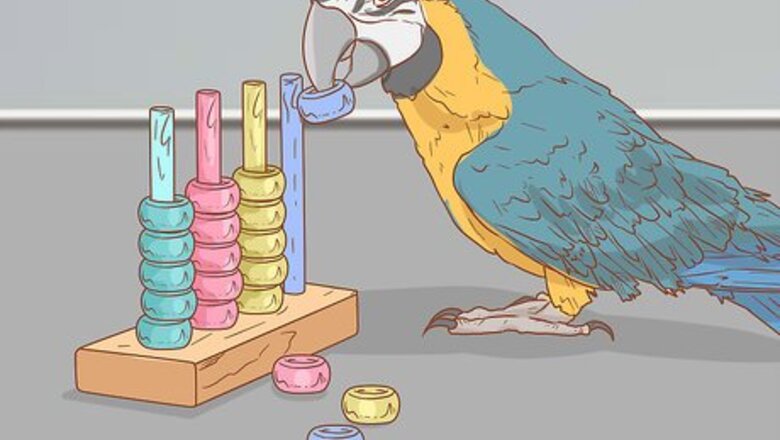
views
Choosing Toys
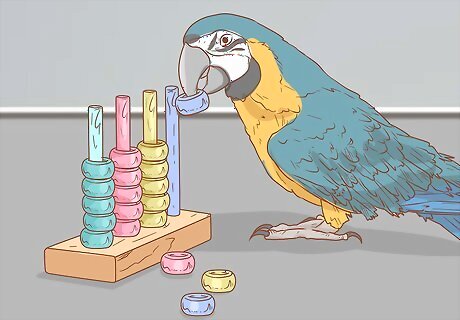
Give your parrot toys it can manipulate. Parrots often stay occupied when playing with toys that mentally and physically stimulate them. Manipulative toys which allow the parrot to move pieces and/or interact with the toy require the parrot to think, keeping it highly engaged. Ladders and ropes can provide physical stimulation while puzzle toys can provide mental stimulation. Various manipulative toys allow parrots to perform sequential tasks like untying knots or disassembling toys. You can buy manipulative toys online or at pet stores. Alternatively, you can buy manipulative toys made for toddlers and repurpose them for your parrot.
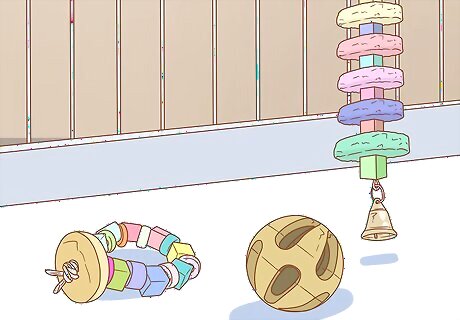
Add chew and shred toys to the cage. In the wild, macaws spend a lot of time chewing. Placing such toys in the cage can provide hours of entertainment to keep them engaged and fully occupied. Toys made from wood, leather, cardboard, or paper are good for chewing and shredding. Make sure to choose non-toxic woods and materials. You can buy toys online or you can make your own. For example, you can dangle pieces of leather, wood, or cardboard from an egg carton or place a toilet paper roll in the cage to entertain your Macaw. Perhaps some old books or cardboard boxes will positively engage your Macaw.
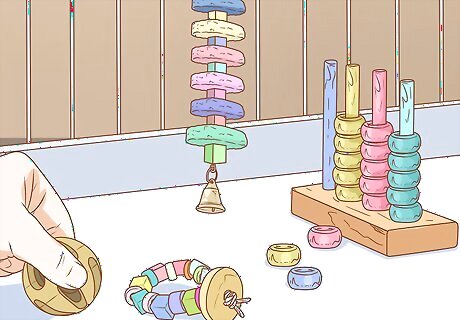
Rotate toys regularly. Macaws are intelligent birds that often get bored when given a limited number or the same things. Changing the toys in your parrot’s cage about once every seven to ten days can help keep them engaged. Doing so reduces the risk of your Macaw getting bored. Keep the toys you take out. Clean them and put them away until you are able to rotate them back into the cage after a few weeks. Wash the toys in a bird-safe cleaner like mild dishwashing detergent or vinegar and water. You could also steam the toys that have a lot of cracks and crevices followed by blotting them with a clean cloth, then air drying until completely dry.
Making the Cage Interesting
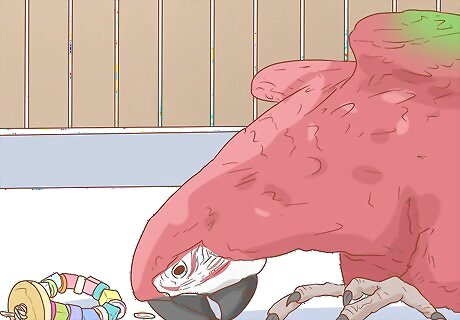
Make your Macaw hunt for food around the cage. Birds love to forage, so hiding food around the cage can keep your Macaw occupied for a while. You can hide food under items in the cage, like toys or bowls. If your Macaw gets good at that, you can put foraging toys into the cage, where it has to figure out how to get the treat out of the puzzle toy. You can hide food in toilet paper rolls or paper bags. You may also cover their bowl with paper or masking tape so they have to figure out how to get it. Try hanging multicolored vegetables on a string in their cage for them to figure out.
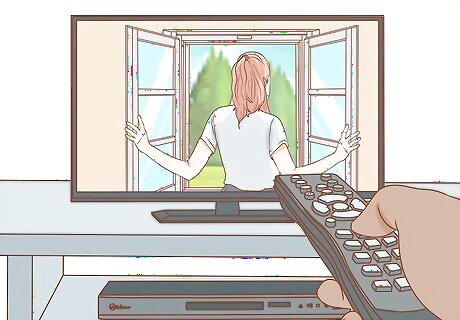
Leave the radio or television on. Birds can get lonely when their humans are gone for eight to ten hours. Macaws are social animals, so leaving the television or radio on can help them not feel so alone. Play some soft instrumental music or a television program with a low level of stress. Your Macaw may pick up words and sentences from programs with words, so be careful not to leave it on anything you don’t want your Macaw to repeat. Don’t leave the TV on the nature channel because the bird may perceive the animals as threats.
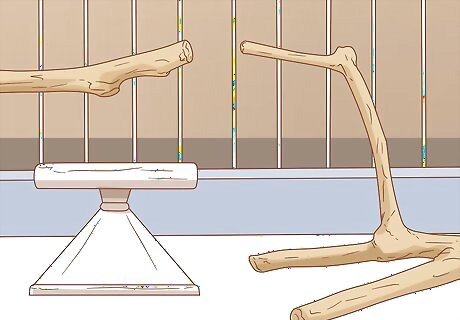
Set up different perches. Providing a variety of different perches for your Macaw can help keep them occupied while they are in their cage. Set up perches of different material, like wood and stone. Place them in different areas, and switch their locations around every week or so to keep it interesting. The size of your perches should vary from around half an inch to 2.5 inches (1.27 to 6.35 cm). This variation is size will help keep their feet strong as well as keep them occupied. Parrots love rope swings, so you can add one or more as additional perches in the cage. Swings also give your Macaw a way to exercise.
Interacting with Your Parrot
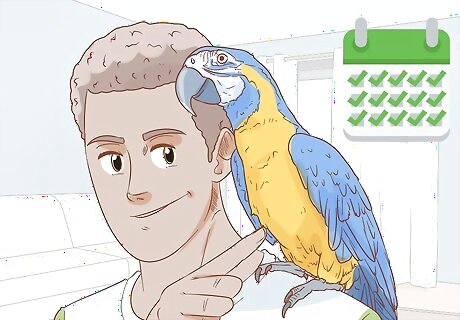
Interact with your parrot daily. Macaws are extremely social birds. They love being around their humans and interacting with them. Make sure to talk to your bird every day. Consider training your Macaw. They are very intelligent birds and can learn a lot of tricks. The time you spend training your bird can help it not feel lonely and strengthen your bond. You can also teach your Macaw to talk.
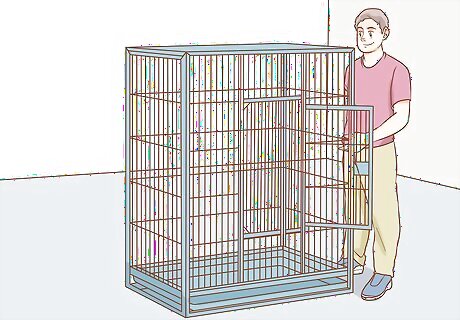
Place the cage in a central area. Your Macaw is part of your family and sees you and the other members of the house as their pack. It is important that you place the cage in an area of the house where you spend time. Never leave a Macaw in a cage in an empty room no one uses, especially if they are alone in the cage. Perfect areas for Macaw cages are high areas in dens and living rooms because they are safe areas that you and your family frequent. Macaw cages should not be in the kitchen because of all the fumes that come from this area. They should also not be in direct sunlight or near vents or other areas of airflow, such as doorways. The minimum cage size for a Macaw is 40 inches (100 cm) wide by 30 inches (76 cm) deep by 6 feet (1.8 m) tall.
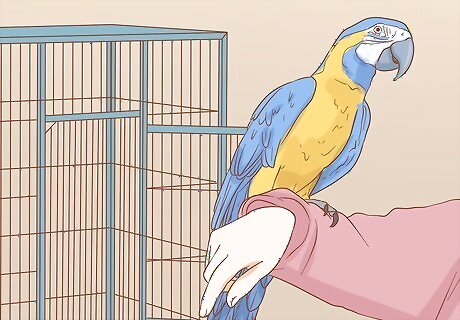
Let the Macaw outside the cage. Your parrot needs to exercise and spend time close to you. This means you should let it out of its cage every day. Put toys around the house for the Macaw to play on, like jungle gyms, bird play areas, perches, and ropes. Make sure the room your Macaw is let out in is safe. It should not contain other pets, open windows or doorways, have exposed wires, or have any harmful substance your bird may get into. You should remove any electrical cords, which your bird could chew on.










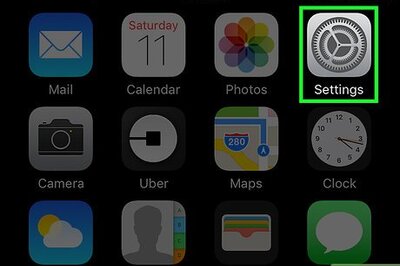


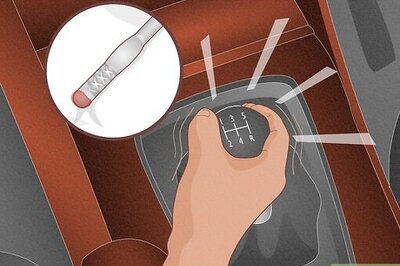





Comments
0 comment